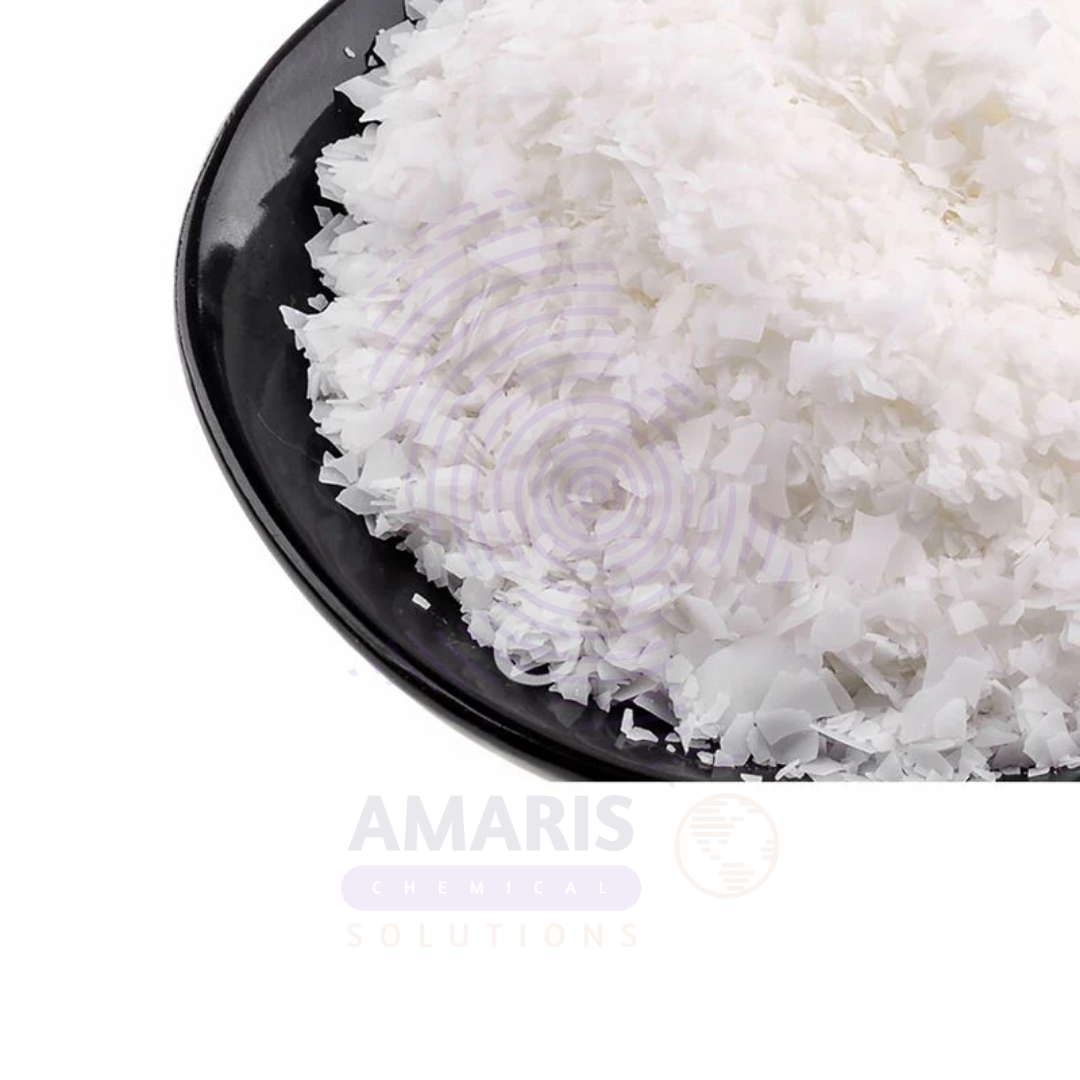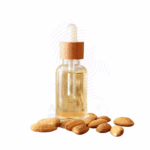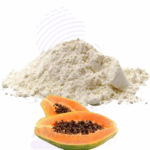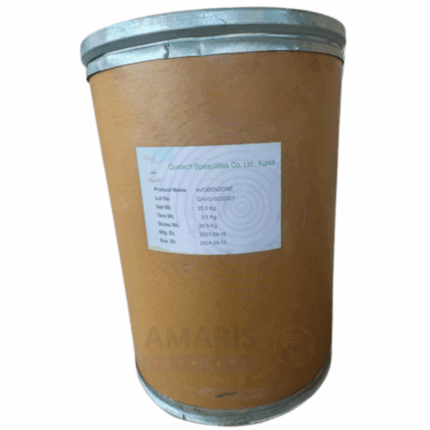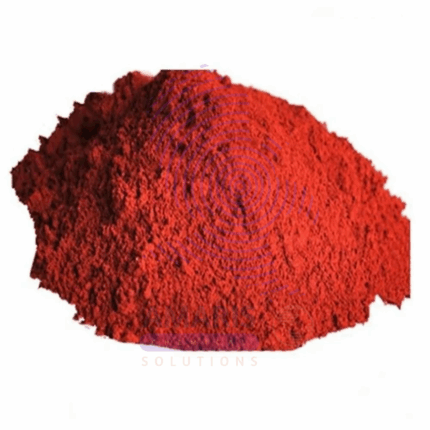Almond Wax
Almond Wax is a natural, plant-based wax derived from the hydrogenation of almond oil (Prunus amygdalus dulcis). It is a creamy to white, semi-solid wax with a mild, nutty scent and excellent emollient properties. Almond Wax is rich in fatty acids and has a smooth, soft texture, making it ideal for use in cosmetic, personal care, and candle formulations.
Due to its gentle consistency, skin-friendly profile, and moisturizing capabilities, Almond Wax is widely used in body butters, balms, lip care products, massage bars, and artisan soaps. It functions as a natural alternative to petroleum-based waxes and provides structure, viscosity, and glide to formulations. It also finds application in soft wax blends for natural candle products.
Almond Wax
Primary Uses
Cosmetics and Personal Care
- Used as a thickener and emollient in lotions, creams, and body butters.
- Incorporated into lip balms and salves to add structure and hydration.
- Applied in massage bars and solid moisturizers for a smooth glide and soft finish.
- Helps stabilize emulsions in water-in-oil and oil-in-water formulations.
- Used in artisan and natural bar soaps to improve hardness and conditioning properties.
- Included in facial masks and balms for moisturizing and skin-softening benefits.
Candle Manufacturing
- Used as a component in soft wax blends for natural candles.
- Provides a clean burn and mild almond scent when used with other waxes (e.g., soy or coconut wax).
- Ideal for massage candles due to its skin-safe, moisturizing nature.
- Common in container candles and melts for smooth consistency and scent throw.
Hair Care Products
- Added to solid shampoos and hair conditioners for emollient and structuring properties.
- Used in styling bars and hair pomades to provide softness and pliability.
Secondary Uses
Pet Care Products
- Used in paw balms and skin creams for moisturizing and soothing dry areas.
- Added to grooming bars for skin-safe application on pets.
Craft and DIY Products
- Popular in handmade personal care items like deodorants, perfumes, and lotion bars.
- Used in hobbyist candle-making for personalized, natural wax blends.
Pharmaceutical and Therapeutic Balms
- Used in topical formulations as a skin barrier and carrier base.
- Suitable for herbal or medicated ointments with natural bases.
Basic Identification Attributes
- Botanical Source: Prunus amygdalus dulcis (Sweet Almond)
- Common/Trade Name: Almond Wax
- INCI Name: Prunus Amygdalus Dulcis (Sweet Almond) Wax
- CAS Number: 68650-55-5
- HS Code: 3404.90
- Synonyms: Hydrogenated Almond Oil Wax, Sweet Almond Wax
Physical & Chemical Properties
- Physical State: Semi-solid to solid wax
- Color & Odor: White to off-white; faint almond-like scent
- Melting Point: 45–55 °C
- Solubility: Insoluble in water; soluble in oils and esters
- Texture: Smooth, soft, and creamy
- Acid Value: < 5 mg KOH/g (typical)
- Saponification Value: 180–200 mg KOH/g (approx.)
Safety & Hazard Attributes
- GHS Classification: Not classified as hazardous
- Toxicity: Non-toxic and safe for topical use
- Allergen Information: Derived from almonds; may not be suitable for nut-allergic individuals in food-contact products
- Exposure Limits: None under normal cosmetic use
Storage & Handling Attributes
- Storage Conditions: Store in a cool, dry area away from direct sunlight
- Container Type: Food-grade bags, drums, or containers
- Shelf Life: 24 months under proper storage
- Handling Precautions: Use clean tools and storage to avoid contamination
Regulatory & Compliance Attributes
- Compliant with cosmetic regulations (EU, FDA, ASEAN) for topical use
- GRAS status not applicable for ingestion unless food-grade certified
- Produced in GMP-compliant facilities suitable for cosmetic and therapeutic use
- Suitable for use in vegan and cruelty-free products
Environmental & Health Impact
- Biodegradability: Biodegradable under normal environmental conditions
- Ecotoxicity: Low environmental impact
Bioaccumulation: Not expected
Safety Handling Precautions
- PPE Required: None required for typical cosmetic handling
- Handling Guidelines: Melt gently under controlled heat; avoid overheating
First Aid Measures
- Inhalation: Not applicable under normal conditions
- Skin Contact: Safe under normal use; discontinue use if irritation occurs
- Eye Contact: Rinse with clean water if contact occurs
- Ingestion: Non-toxic, but not intended for consumption unless food-grade certified
Firefighting Measures
- Fire Hazards: Combustible at high temperatures
- Extinguishing Media: Foam, dry chemical, CO₂
- Special Precautions: Avoid direct flames during heating; wax may splatter
Hazardous Combustion Products: Carbon monoxide, carbon dioxide


 Preservatives(food)
Preservatives(food) Flavor Enhancers
Flavor Enhancers Acidulants
Acidulants Sweeteners
Sweeteners Antioxidants
Antioxidants Colorants(food)
Colorants(food) Nutraceutical Ingredients (food)
Nutraceutical Ingredients (food) Nutrient Supplements
Nutrient Supplements Emulsifiers
Emulsifiers
 Collectors
Collectors Dust Suppressants
Dust Suppressants Explosives and Blasting Agents
Explosives and Blasting Agents Flocculants and Coagulants
Flocculants and Coagulants Frothers
Frothers Leaching Agents
Leaching Agents pH Modifiers
pH Modifiers Precious Metal Extraction Agents
Precious Metal Extraction Agents
 Antioxidants(plastic)
Antioxidants(plastic) Colorants (Pigments, Dyes)
Colorants (Pigments, Dyes) Fillers and Reinforcements
Fillers and Reinforcements Flame Retardants
Flame Retardants Monomers
Monomers Plasticizers
Plasticizers Polymerization Initiators
Polymerization Initiators Stabilizers (UV, Heat)
Stabilizers (UV, Heat)
 Antifoaming Agents
Antifoaming Agents Chelating Agents
Chelating Agents Coagulants and Flocculants
Coagulants and Flocculants Corrosion Inhibitors
Corrosion Inhibitors Disinfectants and Biocides
Disinfectants and Biocides Oxidizing Agents
Oxidizing Agents pH Adjusters
pH Adjusters Scale Inhibitors( water)
Scale Inhibitors( water)
 Antioxidants(cosmetic)
Antioxidants(cosmetic) Emollients
Emollients Fragrances and Essential Oils
Fragrances and Essential Oils Humectants
Humectants Preservatives
Preservatives Surfactants(cosmetic)
Surfactants(cosmetic) Thickeners
Thickeners UV Filters
UV Filters
 Fertilizers
Fertilizers Soil Conditioners
Soil Conditioners Plant Growth Regulators
Plant Growth Regulators Animal Feed Additives
Animal Feed Additives Biostimulants
Biostimulants Pesticides (Herbicides, Insecticides, Fungicides)
Pesticides (Herbicides, Insecticides, Fungicides)
 Active Pharmaceutical Ingredients (APIs)
Active Pharmaceutical Ingredients (APIs) Excipients
Excipients Solvents(pharmaceutical)
Solvents(pharmaceutical) Antibiotics
Antibiotics Antiseptics and Disinfectants
Antiseptics and Disinfectants Vaccine Adjuvants
Vaccine Adjuvants Nutraceutical Ingredients (pharmaceutical)
Nutraceutical Ingredients (pharmaceutical) Analgesics & Antipyretics
Analgesics & Antipyretics
 Analytical Reagents
Analytical Reagents Solvents(lab)
Solvents(lab) Chromatography Chemicals
Chromatography Chemicals Spectroscopy Reagents
Spectroscopy Reagents microbiology-and-cell-culture-reagents
microbiology-and-cell-culture-reagents Molecular Biology Reagents
Molecular Biology Reagents Biochemical Reagents
Biochemical Reagents Inorganic and Organic Standards
Inorganic and Organic Standards Laboratory Safety Chemicals
Laboratory Safety Chemicals Specialty Laboratory Chemicals(Special Laboratory Equipment)
Specialty Laboratory Chemicals(Special Laboratory Equipment)
 Demulsifiers
Demulsifiers Hydraulic Fracturing Fluids
Hydraulic Fracturing Fluids Scale Inhibitors(oil)
Scale Inhibitors(oil) Surfactants(oil)
Surfactants(oil) Drilling Fluids
Drilling Fluids
 Dyes and Pigments
Dyes and Pigments Bleaching Agents
Bleaching Agents Softening Agents
Softening Agents Finishing Agents
Finishing Agents Antistatic Agents
Antistatic Agents
 Admixtures
Admixtures Waterproofing Agents
Waterproofing Agents Sealants and Adhesives
Sealants and Adhesives Curing Compounds
Curing Compounds Concrete Repair Chemicals
Concrete Repair Chemicals Anti-Corrosion Coatings
Anti-Corrosion Coatings
 Surfactants(cleaning)
Surfactants(cleaning) Builders
Builders Enzymes
Enzymes Solvents (Cleaning)
Solvents (Cleaning) Fragrances
Fragrances
 Electronic Chemicals
Electronic Chemicals Catalysts
Catalysts Lubricants
Lubricants Photographic Chemicals
Photographic Chemicals Refrigerants
Refrigerants Automotive chemicals
Automotive chemicals Pyrotechnic Chemicals
Pyrotechnic Chemicals
 Biodegradable Surfactants
Biodegradable Surfactants Bio-based Solvents
Bio-based Solvents Renewable Polymers
Renewable Polymers Carbon Capture Chemicals
Carbon Capture Chemicals Wastewater Treatment Chemicals
Wastewater Treatment Chemicals
 Pigments
Pigments Solvents(paint)
Solvents(paint) Specialty Coatings
Specialty Coatings Binders/Resins
Binders/Resins Additives
Additives Driers
Driers Anti-Corrosion Agents
Anti-Corrosion Agents Functional Coatings
Functional Coatings Application-Specific Coatings
Application-Specific Coatings
 Fresh Herbs
Fresh Herbs Ground Spices
Ground Spices Whole Spices
Whole Spices Spice Blends
Spice Blends Dried Herbs
Dried Herbs
 Leavening Agents
Leavening Agents Dough Conditioners
Dough Conditioners Flour Treatments
Flour Treatments Fat Replacers
Fat Replacers Decoratives
Decoratives Preservatives(baking)
Preservatives(baking)
 Plasticizers & Softeners
Plasticizers & Softeners Reinforcing Agents
Reinforcing Agents Adhesion Promoters
Adhesion Promoters Vulcanizing Agents
Vulcanizing Agents Antidegradants
Antidegradants Blowing Agents
Blowing Agents Fillers & Extenders
Fillers & Extenders Accelerators & Retarders
Accelerators & Retarders